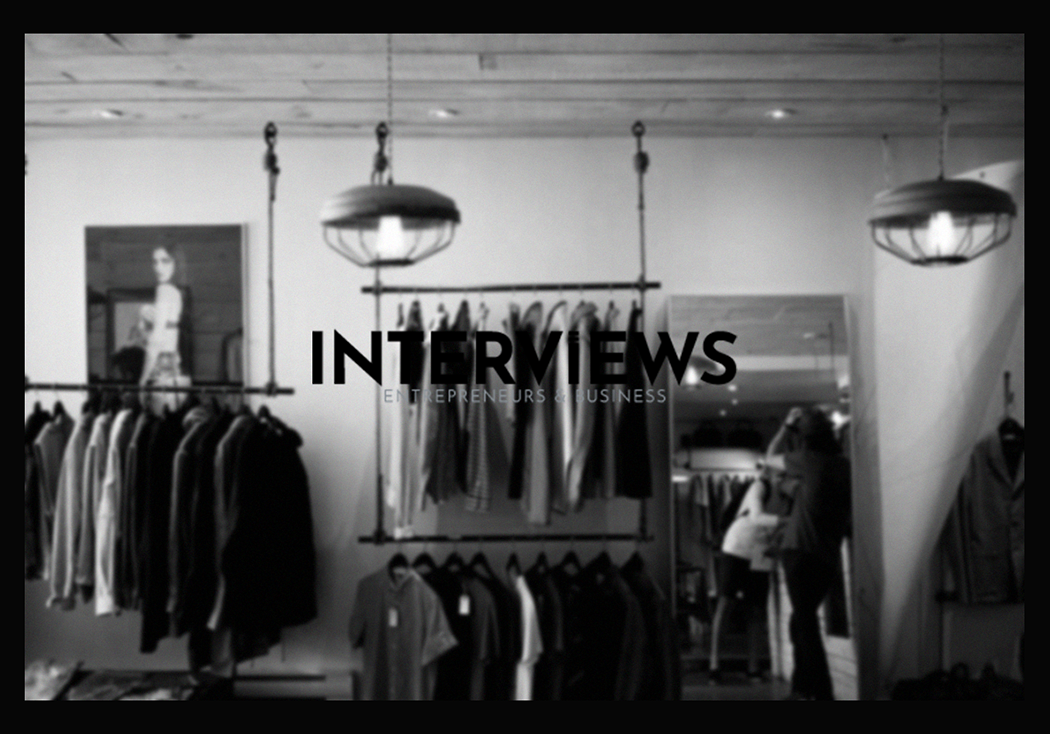So, You Want to Be a Fashion Mogul, Huh? Let’s Talk Threads and Reality.
Dreaming of your designs on runways or in stores? Starting a clothing line can seem glamorous. But it can also be tough. Costs and calculations await. So, before diving into fabrics, let’s discuss what it really takes. Your bank account and brand identity are critical.
Decoding the Dollar Signs: The Cost of Launching Your Clothing Line
First, how much will this stylish journey cost? It’s not a simple answer. It varies. Are you thinking of an online boutique or a huge retail empire? Let’s break down the costs.
Online Clothing Line: Lean, Mean, Fashion Machine (Potentially)
Choosing digital first? Smart choice. Lower overhead exists, yet some expenses remain:
- Business Blueprint & Brand Brilliance: Create a plan. Who are your customers? What’s your brand vibe? Consider marketing strategies. Without a plan, you risk getting lost.
- Design Dreams & Development Drama: Have sketches? Great! Who transforms those into patterns? Hire a designer or learn design software. Unless chaos is your brand, get organized.
- Fabric Frenzy: Seek quality suppliers for materials. Great fabrics lead to great clothes. Don’t skimp unless you aim for “see-through chic.”
- Production Puzzle: Decide on making the clothes. Will you outsource this or do it yourself? Outsourcing may save money at first. But quality control can be a gamble.
- E-commerce Emporium: Your online store must be user-friendly. It needs to look great and handle payments smoothly. It serves as your 24/7 salesperson.
- Marketing Mayhem & Advertising Adventures: How will people know about you? Use social media, email blasts, maybe paid ads? You need to promote.
- Inventory Investment: You must stock up on clothes. Don’t overbuy initially. You don’t want unsold stock.
Large Retail Clothing Line: Brick-and-Mortar Budget Busters
Thinking bigger? Retail stores have high costs:
- Rent & Reality Checks: Physical spaces cost money. Rent, utilities, maintenance add up quickly. Location affects costs significantly.
- Staffing Situation: You need employees! Sales staff, customer service reps, perhaps in-house production workers. They are essential but cut into profits.
- Inventory Inferno: A store needs stock. Large inventory = large investment. Be ready for storage challenges!
- Marketing & Mega-Promotion: Attracting customers involves new strategies. Think local ads, grand openings, and eye-catching displays.
- Equipment Extravaganza: Get display racks, point-of-sale systems, and security measures. These items aren’t free and are necessary.
- Legal Labyrinth & Insurance Inquiries: Licenses, permits, insurance matter. Don’t skip this important paperwork.
Cost Catalysts: What Makes the Price Tag Pop?
Various factors influence costs:
- Location, Location, Location: A storefront in NYC versus a small town makes a big difference in rents and costs. Online businesses benefit from flexibility.
- Scale Spectacle: A tiny online shop differs from a nationwide chain in costs. Bigger ventures incur bigger expenses.
- Concept Conundrum: Basic tees cost less than bespoke gowns in materials and marketing strategies.
- Production Path: Outsourcing can lower costs, but you lose some control. In-house may require more investment but offers tighter control.
- Marketing Magic (or Misery): Effective marketing is an investment that pays off. Poor marketing wastes money.
Minimum Moolah? What’s the Damage?
What is the ballpark figure? For a solo venture in India, expect around ₹5 lakh to ₹10 lakh to start. This covers essentials like inventory and operations. But keep in mind costs can rise quickly.
Profitability Pursuit: Show Me the Money!
Costs are daunting, but what about profits? The clothing industry has varied profit margins.
- Retail Reality vs. Luxury Lane vs. Mass Market Maze: Retail clothing sees profit margins from 40% to 60%. Luxury margins can be higher. Mass-market brands rely on volume.
LLC: Your Business Bodyguard?
Let’s talk legalities – Limited Liability Company (LLC). Do you need one? Maybe not, but it often proves beneficial.
LLC Love: The Perks
- Liability Lockdown: An LLC protects personal assets from business risks or lawsuits. It serves as a shield for your finances.
- Professional Persona: LLCs add legitimacy. Customers and suppliers take you seriously if you avoid being just “Joe’s T-Shirt Shop.”
- Finance Firewall: An LLC separates personal and business finances. This makes accounting clearer and shows you run a legitimate business.
- Taxing Timesavers (Potentially): LLCs can offer tax advantages based on your circumstances. Consult a tax professional for guidance.
- Operational Oasis: LLCs facilitate processes like opening bank accounts and securing loans with less hassle.
LLC? Nah, Maybe Later…
When might an LLC be excessive?
- Small Fry, Low Risk: Small clothing line with minimal risk? Consider starting as a sole proprietorship. But plan for future growth.
- Testing the Waters: Want to explore before committing? Start without an LLC first, but be ready to incorporate if successful.
LLC Launchpad: The Steps
Ready to form an LLC? Here’s your checklist:
- Name Game Strong: Choose a unique business name. Check online databases to ensure availability.
- Register & Roll: File with your state’s Secretary of State. Each state has unique requirements, so verify procedures.
- EIN – Your Business ID: Obtain an Employer Identification Number from the IRS for identification.
- Operating Agreement Oasis: Draft this document to outline operations. It’s not always required but helpful.
- Business Bank Bonanza: Open a business bank account for your LLC. This ensures financial separation and professionalism.
Clothing Line Commencement: Your Launch Checklist
Ready to start? Here’s a quick checklist:
- Design Dynamo: Hone your design skills through practice or courses. Fashion sense requires training.
- Business Brainpower: Develop a business plan. It serves as your roadmap to success or survival.
- Trend Tracker: Monitor fashion trends. What’s popular? Stay relevant while avoiding copying.
- Brand Builder: Create a strong brand identity with logo and voice. What sets you apart?
- Design & Develop, Darling: Turn your brand into clothing designs through sketches and prototypes.
- Fabric Finder General: Source fabrics or create your own if you’re skilled in textile design.
- Production Power-Up: Establish your production methods. Decide between in-house or outsourced options.
Zero Dollar Dreams: Clothing Line on a Shoestring
Tight budget? Starting a clothing line with little money is tough but possible. It requires smarts, hard work, and maybe luck.
Planning Power: Free and Fabulous
- Business Plan, Budget-Friendly: Outline target audience, brand, products, and marketing without high costs. Free templates exist online.
- Market Research on the Cheap: Analyze competitors and trends on social media at no cost. Free research is invaluable.
- Brand Definition – No Costs: Define your brand vibe and logo with affordable tools like Canva. Creativity is free!
Design &
Production: Clever & Cost-Conscious
- Free Design Tools: Use Canva or Adobe Express. Their free versions are powerful for logos, mockups, and social media graphics.
- Dropshipping/Print-on-Demand: No upfront inventory! Someone else handles production and shipping. Lower profits exist, but no inventory risk.
- DIY & Upcycling Magic: Have sewing skills? An eye for repurposing? Upcycle old clothes! Create unique pieces sustainably and affordably.
Online Oasis & Marketing Minima
- Social Media Savvy: Use Instagram, TikTok, Pinterest. These are free marketing platforms! Engage, post often, use hashtags. Content remains king.
- Website Wonders (Free-ish): Wix and Squarespace – basic plans are affordable or free. Get your online presence set up.
- Content is Currency: Create blog posts, videos, free content tied to your brand. Attract your audience organically.
- Influencer Intel (Micro-Level): Collaborate with micro-influencers. They are often cheaper or free in exchange for products.
- Free Advertising Avenues: Use free social media ads, community outreach, and free networking events.
Sales & Service Smarts
- Online Store Setups (Low-Cost): Shopify and Etsy – low-cost platforms for your store. Pay transaction fees only when you sell.
- Customer Experience Obsession: Good customer service costs time and effort. Happy customers provide the best (free) marketing.
- Feedback Fuel: Ask for feedback. Analyze what works and what doesn’t. Free market research from customers.
Funding & Legal Frontier
- Crowdfunding Campaigns: Use Kickstarter or Indiegogo to raise initial funds. It takes effort but can be effective.
- Friends & Family Funding: Consider small loans from those who support you. Treat this professionally with a clear repayment plan.
- Small Business Loan Scrutiny: Look into loans once you have traction and a solid plan.
- LLC – Later is Okay: Start lean. Think about an LLC when your business grows and risks increase.
Fabric Frontier: The Quest for Textiles
Sourcing fabric is crucial in the clothing line puzzle. It involves quality, cost, and consistency, not just color.
Know Your Needs: Fabric Fundamentals
- Design Demands: Activewear needs different fabrics than evening wear. Match fabric to your clothing style and customers.
- Fabric 101: Construction Course: Learn fabric types, weaves, finishes. Know cotton, silk, polyester, and blends to make smart choices.
- Quality Quest: Standards Setting: Establish quality standards like durability, feel, and sustainability that matter to your brand.
Supplier Safari: Where to Find Fabric Gold
- Online Outposts: Websites that specialize in fabric sourcing serve as digital showrooms. Explore Alibaba or specific textile marketplaces.
- Trade Show Treks: Attend industry events and fabric expos. Touch and feel fabrics in person. Meet suppliers directly.
- Mill Mysteries (MOQ Alert): Buying direct from mills means lower prices but high minimum order quantities (MOQs), not always beginner-friendly.
- Distributors & Agents – Middlemen Magic: Agents provide access to more fabrics and streamline sourcing. Factor in their fees.
- Local Fabric Lairs (Like LA Markets): Local fabric markets are perfect for small quantities and diverse options. Explore your local scene!
Supplier Selection: The Checklist
- Quality is King (or Queen): High-quality fabrics are essential for success. Don’t cut corners on quality.
- Sustainability Spotlight: Care about eco-issues? Look for suppliers with ethical practices. Transparency matters.
- Pricing & Pace: Deals and Delivery: Negotiate prices, understand lead times. Reliable delivery is critical for production.
- MOQ Mind Games: Minimum Order Mayhem: MOQs can pose challenges. Ensure they fit your production size when starting small.
- Sample Scrutiny: Touch and Test: Request samples before bulk orders. See, feel, and test fabrics first to avoid surprises.
- Relationship Riches: Supplier Serenity: Build good relationships with suppliers. Reliable partners are vital for a smooth supply chain.
Sourcing Strategies: Paths to Fabric Procurement
- Direct Dive: Mill Sourcing Mastery: Buy directly from mills for cost savings and more control. This requires bigger orders and management.
- Agent & Distributor Direction: Middleman Maneuvering: Use agents for better variety and streamline logistics.
- Jobber Jumps: Discount Deals (Caution): Jobbers sell excess fabric at discounts. Quality can be inconsistent, so be cautious.
- Factory Favors: Manufacturer Mentions: Ask your clothing manufacturer for fabric supplier recommendations. They often have contacts.
Fabric Sourcing Formula: Your Plan of Action
Create a sourcing plan: outline needs, list suppliers, set timelines. Consider quantities, lead times, quality, and sustainability. Planning prevents panic and shortages.
First Collection Focus: Small & Strategic
Launching your first collection? Start small. Focus on testing the waters instead of overwhelming choices.
- Style Count Sanity: Less is Often Luxe: For womenswear, aim for 3-8 styles for your first collection. Quality over quantity matters most.
Boutique Buying: Stocking Your Shelves
Starting a boutique? Where will you source your clothes? Wholesale and dropshipping are great options.
- Wholesale Wonders & Dropshipping Delights: Options like Faire, Wholesale7, and Sugarlips offer wholesale supplies. Tasha Apparel combines wholesale with dropshipping. Explore!
Home-Based Hanger Heaven: Selling Clothes Online from Your Couch
Selling online from home? Here’s a streamlined strategy:
- Online Outfit Onslaught: The 8 Steps:
- Find Your Niche: Identify what clothing you want to sell. Who are your customers?
- Decide What to Sell: Will you focus on specific items or a broad range?
- Choose a Business Model: Dropshipping or wholesale? Maybe design your own items?
- Plan Your Supply Chain: How will you obtain clothes?
- Create Your Store: Use an online platform and set up your website.
- Get Social: Focus on social media marketing.
- Implement Marketing & SEO: Drive traffic to your store effectively.
- Bookkeeping Basics: Track income and expenses from day one.
Clothesline Chronicles: Unexpected Business Costs? (Humor Break!)
Buckle up for a surprise because business has hidden costs everywhere. Did you know clothesline installation has a cost too?
- Clothesline Costs? Really?: It costs around $165 to install a standard clothesline! This might not relate to clothing lines but consider how unexpected expenses arise everywhere.
Profit Peak: Clothing Categories That Cash In
If you wonder which clothes yield the most profit?
- Fast Fashion Frenzy: Despite its issues, fast fashion remains highly profitable due to its volume and quick trend cycles. Ethically speaking aside, it generates significant revenue.
Failure Files: Fashion Flops and Facts
The fashion industry is competitive — brutally so.
- 98% Failure Rate – Gasp!: About 98% of clothing startups fail within their first few years. This statistic emphasizes the need for strategy and resilience in business.
Bestseller Bonanza: What’s Hot in Apparel?
Your product choices can be influenced by knowing what sells well.
- Hoodies, Tees, and Kicks Reign Supreme: As of 2019, globally most sold sportswear includes hoodies (67%), T-shirts (67%), and footwear (66%). Basics prevail.
Big Brands, Big Bucks: Fashion Titans
Who are the most successful brands in fashion?
- Luxury Leaders: Louis Vuitton, Dior, Nike: Louis Vuitton holds the top spot in revenue ($84.68 billion). Dior and Nike follow closely behind them due to brand power and global reach.
Market Maze: Fashion Saturation Situation
The fashion market is crowded. That should be understated!
- Over-Saturation Station: This industry is notoriously oversaturated. Standing out requires unique branding, clear niches, and strong marketing.
Inclusivity Imperative: Fashion for Everyone
The modern fashion world must be diverse and inclusive. This is not just a trend but a responsibility.
- Representation Revolution: Fashion has faced criticism for poor diversity. More efforts are underway. Reflect inclusivity in your brand—it resonates with today’s consumers.
Budget Business Options: Beyond Clothing (If Needed)
If starting a clothing line seems daunting financially, consider cheaper alternatives.
- Service Sector Stars (Cheap to Launch):
- Freelance Writing/Graphic Design
- Virtual Assistant Services
- Tutoring
- Consulting
- Social Media Management
- Personal Training
- Resume Writing/Career Coaching
- Mobile Notary Service
- Non-Medical Home Care
- Errand/Concierge Services
- Dropshipping
-
- Print-on-Demand
- Etsy Store (Handmade/Vintage)
- Affiliate Marketing
- Online Reselling
- Blogging/Content Creation
Brand Protection Protocol: Shielding Your Style
Protect your brand. It represents you.
- Trademark Triumph: Trademark your brand names. Register them to secure your identity.
- Copyright Clarity (Name Game): Register your brand name. This keeps copycats away from your identity.
Amazon Avenue: Selling Clothes on the Retail Giant
Want to sell on Amazon?
- Amazon Apparel Adventure: To sell clothes, get a selling plan. Enroll in Brand Registry. This gives you tools to succeed on Amazon.
Inventory Insights: Shirt Stockpile Strategy
How many shirts when starting a business?
- 30-50 Shirt Sweet Spot: Buy 30-50 shirts per design. This reduces risk. See what sells before committing more.
Production Price Points: Clothing Costs Uncovered
How much does it cost to make clothes?
- Shirt Showdown: Average production cost: $0.50-$3.00. The remainder goes to markups and marketing. Production costs are just a piece of pricing.
- Pants Particulars: Replacing pant lining costs about $64.50. Alterations add to garment expenses.
Collection Composition: How Many “Looks”?
What is a fashion collection?
- 12 Looks – The Collection Count: A collection includes at least 12 related pieces. Ensure a cohesive theme, not random items.
Indoor Drying Dilemmas: Clothesline Considerations
Indoor clotheslines matter.
- Energy & Money Saver: Indoor airers save both energy and cash. Good for personal use and brand image.
- Shady Spot Strategy: Avoid strong summer sun. It fades colors. Seek light shade and a breeze for better drying.
Sewing Snippets: DIY or Delegate?
Sewing skills are crucial.
- Simple Sew-to-Sell Successes: Tote bags and headbands are easy items to sew. Great for beginners to gain experience.
- DIY vs. Buy: Sewing can save money but often does not. Fabric and time affect costs significantly.
- Sewing Rates Rundown: Seamstresses average $17/hour. Budget for these rates if hiring others.
LLC Legacies: Write-Off Wonders
LLC tax write-offs are beneficial.
- Car Cashback: LLCs can deduct car payments for business use. Track your mileage.
- Clothing Costs: You can deduct clothing only if not suitable for outside wear. Work uniforms qualify; everyday wear does not.
- Cell Phone Savings: LLCs may pay your cell phone costs if used for business. Keep business and personal uses separate.
There’s much to learn. Starting a clothing line takes time. Research, plan, and hustle. Beat the odds and succeed!





